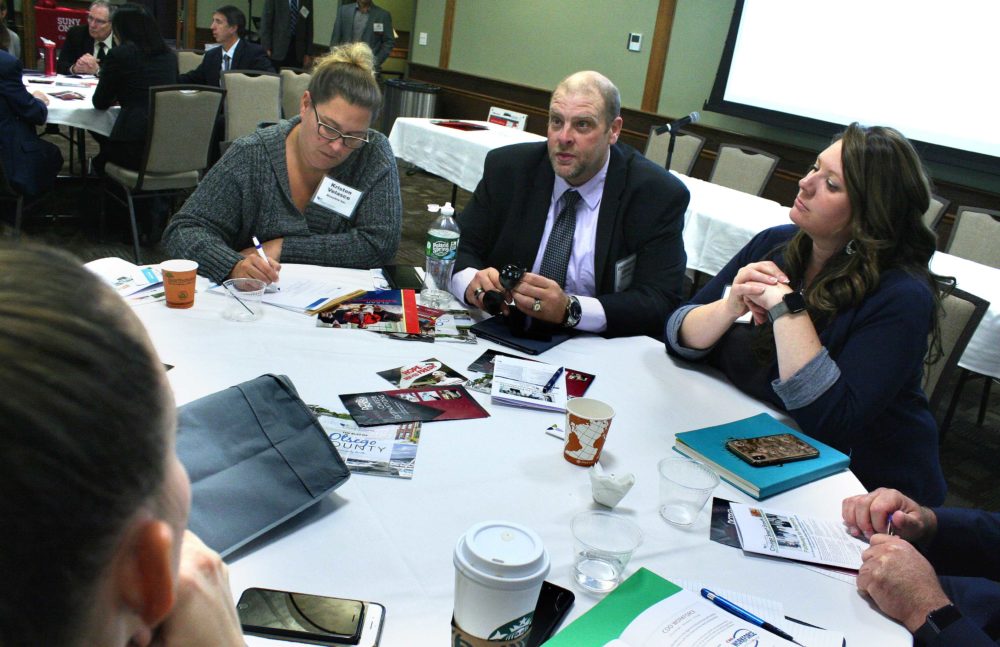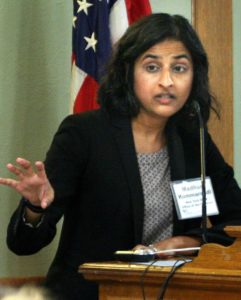2ND ANNUAL WORKFORCE SUMMIT:
Otsego Has Jobs;
No One To Do Them
However, Workforce Training $$,
‘Knowledge Economy’ Offer Hope

By JIM KEVLIN • Special to www.AllOTSEGO.com

ONEONTA – Otsego County has more jobs than workers to do them.
That message surfaced from a number of presenters at today’s Pathways to Prosperity, the Otsego County Chamber of Commerce’s second annual Workforce Summit at SUNY Oneonta’s Morris Hall:
- Madhuril Kommareddi, Governor Cuomo’s new Workforce Development director, appointed in May, reported the Upstate unemployment rate is 3.8 percent – 4 percent is considered “full employment.” With that in mind, she said, the focus needs to be on “employer-driven skills,” training people for specific skills for jobs that aren’t being filled.
- “There are a lot of jobs to fill, and not a lot of candidates to fill them,” said Perry Dewey, DCMO BOCES superintendent, who served on a panel with two other BOCES’ superintendents, Nick Savin and Sandra Sherwood. Within 25 miles of Sidney, Dewey reported, there are 800 available jobs, and 20 percent of workers are due to retire within five years.
- “Our challenge now is our low unemployment rate,” echoed Christian Harris, the state Department of Labor’s market analyst for Otsego County. He also reported that the number of jobs available in the county has dropped from 26,000 to 22,000, although economist now view the county as a “job growth” area.
You have reached your limit of 3 free articles
To Continue Reading
Our hard-copy and online publications cover the news of Otsego County by putting the community back into the newspaper. We are funded entirely by advertising and subscriptions. With your support, we continue to offer local, independent reporting that is not influenced by commercial or political ties.

